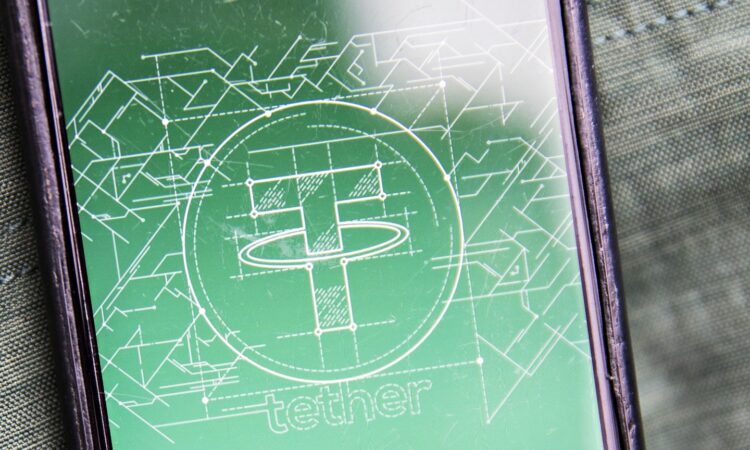
They are digital assets designed to hold a steady value, in contrast to the price volatility seen in Bitcoin and other so-called tokens. They’re usually pegged to another currency, most commonly the US dollar. That makes stablecoins useful for crypto investors who need to park their profits somewhere safe but don’t want to convert them back into real money. The most widely used stablecoin, Tether, can be exchanged for thousands of other cryptocurrencies. There are dozens of stablecoins in use.
2. How do they maintain their value?
Many stablecoin issuers say they hold cash or other assets to match the value of the stablecoin in circulation. So when a user pays Tether $1 for a token, that money is supposed to be held in relatively safe assets. Others maintain reserves of cryptocurrencies rather than traditional money but “overcollateralize,” meaning the reserves are larger than the face value of the stablecoins to compensate for their volatility. Another type known as algorithmic stablecoins use automated operations meant to maintain their value. Some achieve this by adjusting their supply — generating more coins when they trade above their pegged value so that the price comes down, and removing some from circulation when they fall below the peg so the price goes up. But the appeal of algorithmic stablecoins diminished when the largest of them, TerraUSD, and its sister token, Luna, melted down in May 2022, losing a combined $60 billion in market value in days.
3. What went wrong with TerraUSD?
TerraUSD was an algorithmic stablecoin that used a parallel floating-rate currency, Luna, to back up its fixed dollar exchange rate. It offered users interest rates as high as 20% on deposits. But when its value slipped after a series of large withdrawals, both TerraUSD and Luna plunged to near zero. To critics, the only thing sustaining TerraUSD had been the money pouring in from investors convinced it would keep growing. When that optimism evaporated, there was nothing left to sustain it. TerraUSD’s collapse sparked a broader selloff that wiped $200 billion off of the market capitalization of all cryptoassets in a day and briefly knocked Tether off its peg, reviving doubts about how adequately its assets were backed.
4. What are the questions about Tether?
The question is whether Tether, as USDT’s issuer, really is setting aside enough in assets to keep its dollar peg secure. These questions have been raised since shortly after it was first issued in 2014, in part because the company has never released the kind of audited financial statements that normal deposit-taking banks are required to report. As part of a 2021 settlement with the New York Attorney General, which included allegations that Tether lied about its reserves in the past, “attestations” on its reserves are now filed quarterly. That deal saw Tether and its sister crypto exchange Bitfinex fined $18.5 million, while another settlement with the Commodity Futures Trading Commission ordered Tether and Bitfinex to pay $42.5 million in penalties that same year. Tether admitted no wrongdoing. Some investigations are still ongoing, including a US Justice Department probe into whether Tether executives deceived their banking partners.
5. What do regulators fear about stablecoins?
They worry about the risk of more stablecoin crashes that could trigger fire sales of other assets as their backers try to maintain a peg. Even more worrisome is the converse scenario — that stablecoins prove their worth, soar in popularity and allow vast sums to change hands without touching the formal banking system, undermining the monetary monopoly of central banks and enabling criminals to engage in massive money laundering.
6. What do they plan to do?
The US Federal Reserve wants the power to police issuers the way it does banks, with robust capital requirements and constant supervision to ensure their stability. Some central banks are devising their own digital tokens that would make transactions faster and cheaper than with regular cash, but safer than private cryptocurrencies.
7. What’s the problem with BUSD?
BUSD is a stablecoin issued by Paxos Trust Co. through a partnership with Binance Holdings Ltd., the world’s largest crypto exchange by volume. In February 2023, New York-based Paxos said that it would stop minting the Binance-branded stablecoin “as directed by” the New York Department of Financial Services. According to a statement by Paxos, the SEC alleged that BUSD is a security and that Paxos should therefore have registered the BUSD offering under the federal securities laws. Paxos said the company “categorically disagrees” with the SEC’s statement. In the SEC’s view, an asset is a security when it involves investors kicking in money with the intention of profiting from the efforts of the organization’s leadership. It’s a designation that comes with extensive filing and disclosure requirements. In January, Binance acknowledged flaws in its management of a separate stablecoin called Binance-peg BUSD but said it had made changes to make sure it was backed 1-1 by collateral.
More stories like this are available on bloomberg.com



